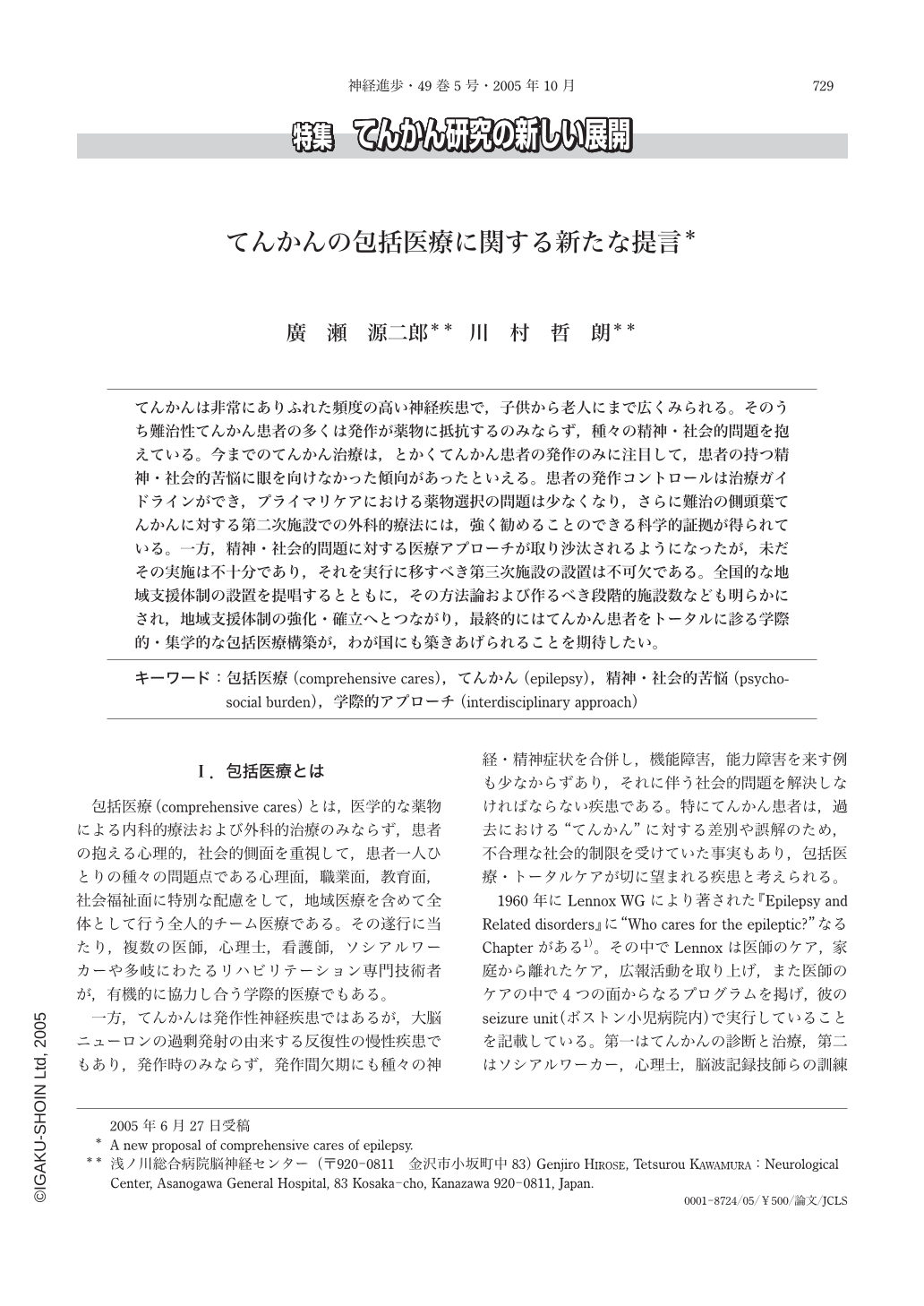Japanese
English
- 有料閲覧
- Abstract 文献概要
- 1ページ目 Look Inside
てんかんは非常にありふれた頻度の高い神経疾患で,子供から老人にまで広くみられる。そのうち難治性てんかん患者の多くは発作が薬物に抵抗するのみならず,種々の精神・社会的問題を抱えている。今までのてんかん治療は,とかくてんかん患者の発作のみに注目して,患者の持つ精神・社会的苦悩に眼を向けなかった傾向があったといえる。患者の発作コントロールは治療ガイドラインができ,プライマリケアにおける薬物選択の問題は少なくなり,さらに難治の側頭葉てんかんに対する第二次施設での外科的療法には,強く勧めることのできる科学的証拠が得られている。一方,精神・社会的問題に対する医療アプローチが取り沙汰されるようになったが,未だその実施は不十分であり,それを実行に移すべき第三次施設の設置は不可欠である。全国的な地域支援体制の設置を提唱するとともに,その方法論および作るべき段階的施設数なども明らかにされ,地域支援体制の強化・確立へとつながり,最終的にはてんかん患者をトータルに診る学際的・集学的な包括医療構築が,わが国にも築きあげられることを期待したい。
Many patients with intractable epilepsy have multiple disabilities with psychosocial problems. The tasks of a health care system for these patients must provide appropriate primary, secondary and tertiary cares including the prevention of epilepsy and cares for psychological well-being and social rehabilitation as well as seizure control by medical and surgical approaches. All residents should equally have access to these comprehensive cares regardless of the disabilities of patients with intractable epilepsy.
We now have a guideline for the treatment of epilepsy in adult and we should know the fact that a surgical treatment for temporal lobe epilepsy is strongly recommended after a failure of multiple antiepileptic drug treatment over 2-3 years. But we should fully evaluate patients with intractable epilepsy before surgery by the interdisciplinary approach, using very sophisticated methodologies, such as a video-EEG monitoring, a high resolution of MRI, ECD-SPECT, FDG-PET, Wada tests as well as psychological evaluations.
A structured management system for patients with epilepsy should be established in primary care of epilepsy with a link to well equipped secondary, tertiary hospital care systems. This structured system has to introduce non-clinical interventions and disseminate information to improve quality of life for patients with intractable epilepsy. The system must assist needs of patients with learning disability as well. Finally these comprehensive epilepsy cares should be assessed critically for frequent outcome measures, including the result of medical and surgical treatments as well as psychosocial rehabilitation.

Copyright © 2005, Igaku-Shoin Ltd. All rights reserved.


